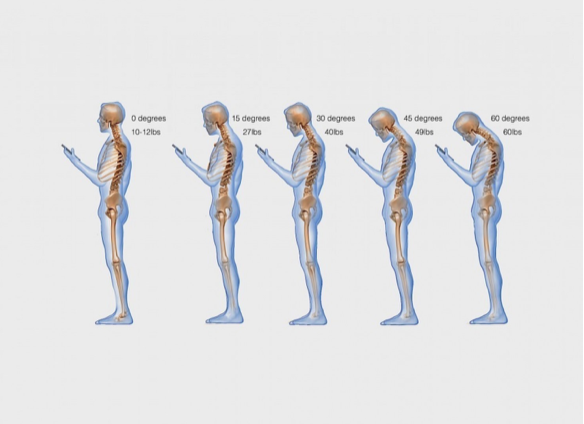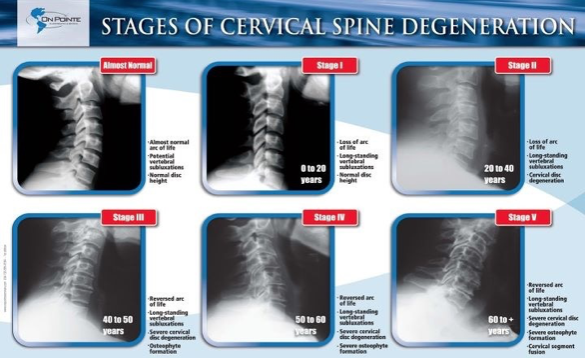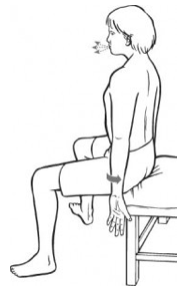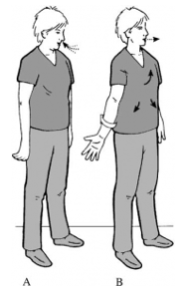A large portion of my practice involves treating patients for a condition called “upper-crossed syndrome.” This involves muscles of the neck and shoulders becoming tight and/or weak, resulting in a sort of slumped posture. Typically, this develops over a period of 10 or more years. More recently, another similar condition is becoming prevalent; “Text Neck.”
Text Neck is a novel term to describe how people look while constantly using their mobile devices, (forward rolled shoulders, a hunch at the base of the neck, and head tilted forward about 45 degrees). But it’s more than how people look; it sums up the cause of why these people end up with neck and shoulder pain.
Imagine for a minute you’re doing sit-ups; what’s the number one rule we’re all taught in gym class? …Don’t pull on your neck as you’ll strain the neck muscles. The fact is, your head weighs 8-11 lbs, and if positioned correctly over your spine, resembles a bowling ball on a golf tee. Every few degrees your head moves forward increases the weight supported by your neck muscles and bones. “At a 15-degree angle, this weight is about 27 pounds, at 30 degrees it’s 40 pounds, at 45 degrees it’s 49 pounds, and at 60 degrees it’s 60 pounds.” It’s no wonder these folks have neck pain!

To make matters worse, there is a largely accepted theory in anatomy called “Wolff’s Law.” This law states “bone in a healthy person or animal will adapt to the loads under which it is placed. If loading on a particular bone increases, the bone will remodel itself over time to become stronger to resist that sort of loading.” While this may sound good at first, what it means is our bones will undergo degenerative changes to better support Text Neck. This may result in all sorts of issues namely reserved cervical curve, narrowing disc spaces, bone spurs, disc bulge/herniation. Symptoms may include neck and upper back pain, headaches, numbness in arms and hands, TMJ issues, and decreased range of motion to name a few. If you are currently experiencing any of these issues, it’s probably time for a visit to your chiropractor or physical therapist.

While it’s just about impossible to avoid our favorite devices, we should each make an effort to use them in an appropriate or neutral position, and avoid spending hours each day in a hunched position. My favorite exercise to encourage a good posture is called Bruegger’s Relief Position. This may be performed sitting or standing.
 When Sitting:
When Sitting:
- Sit at the edge of your chair. You should feel the “sit bones” on the chair.
- Hold your head up high in an exaggerated “proud” position.
- Position your legs slightly apart with your feet turned out slightly.
- Rest your weight on your legs and feet and relax your abdominal muscles. Let your arms fall to your sides.
- Tilt your pelvis forward and raise your breastbone up.
- Turn your hands palms-out.
- Turn your arms outward squeezing your shoulder blades together.
- Hold this position and take deep “belly” breaths for 10 seconds
 When Standing:
When Standing:
- Stand tall and proud with head held high
- Spread your legs slightly apart to the sides
- Turn your feet outward slightly
- Draw your belly in slightly toward your spine
- Tilt your pelvis forward and raise your breastbone up
- Turn your hands palms-out and your arms slightly outward, with the arms somewhat raised from your sides, squeezing your shoulder blades together.
- Hold this position and take deep “belly” breaths for 10 seconds
I enjoy technology. Using my devices helps me stay closer to friends and family, in addition to being more productive. My message is to be aware of your posture when using your device so you may avoid neck and back problems in the future. So keep on texting, Facebooking and reading digital novels. Just make sure you’re minding your posture.
References:
http://www.washingtonpost.com/news/morning-mix/wp/2014/11/20/text-neck-is-becoming-an-epidemic-and-could-wreck-your-spine/
https://en.wikipedia.org/wiki/Wolff%27s_law

2 thoughts on “Text Neck – What Looking Down at your Cellphone Does to your Posture”
Comments are closed.